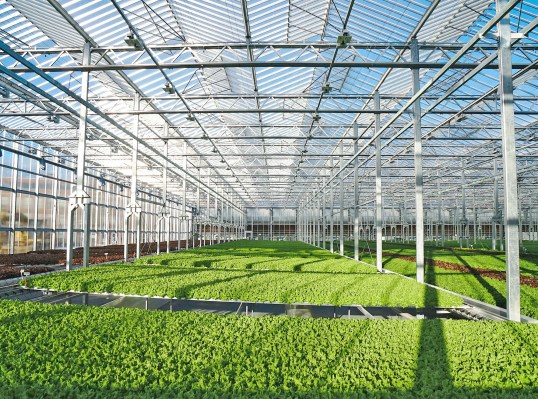Like many in the New York area, Gotham Greens first grabbed my attention by way of the greenhouses they installed on Brooklyn’s first Whole Foods location. The sight of the four glass structures atop the massive brick building in Gowanus is a pretty great microcosm of the ideas behind urban farming.
Specifically, building on top of an existing building removes the need to monopolize more precious ground-level square footage. It also really drives home the notion of a direct pipeline from farm to table. That last bit is key both for ensuring fresher produce, but also removing the destructive impact of driving a truck full of lettuce thousands of miles cross country. Gotham’s greenhouses aren’t definitionally vertical farms, but they do utilize some of the same underlying principles.
This week, the NYC firm announced plans to double its greenhouse square footage over the remainder of the year. By 2022, Gotham says it will have expanded its greenhouse capacity from 600,000 square feet to north of 1.2 million. That includes facilities currently being developed in Texas, Georgia and Colorado, as well as expansion in Chicago and Rhode Island. Those join existing locations in New York, Rhode Island, Maryland, Illinois, Colorado and California.
The benefits of greenhouses over traditional farming are numerous, including the ability to grow year-round. The category has been wildly popular in European countries — the Netherlands — particularly, and is currently gaining even more traction alongside the related field of vertical farming. The latter, of course, allows firms to pack in more crops by growing up, while the former draws more direct power from the sun, rather than relying entirely on LEDs.
“Our goal is to deliver Gotham Greens’ fresh produce within a day’s drive from our greenhouses to 90% of consumers across the U.S., and these strategic greenhouse expansion projects bring us closer to this milestone,” says co-founder and CEO Viraj Puri.
Given the standard push into urban centers like New York, Gotham’s move into California was initially a bit of a headscratcher, given that state already produces north of 13% of U.S. agricultural crops. The company notes, however, that it is “purposefully expanding its operations into U.S. regions that are being impacted by the effects of climate change.”
